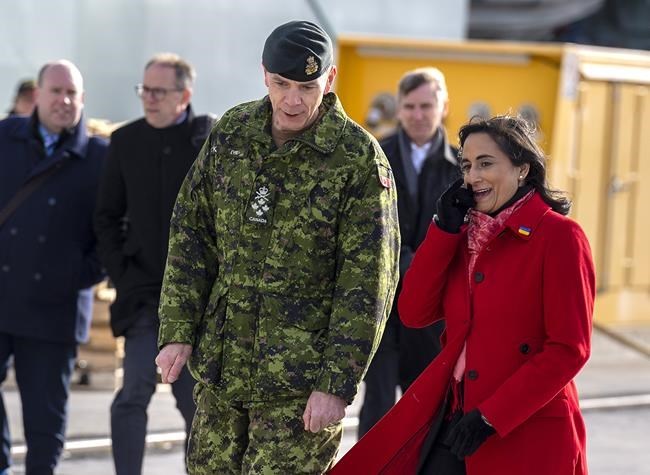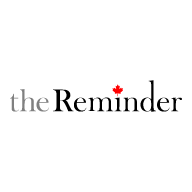OTTAWA — Defence Minister Anita Anand faced questions Friday about whether the Canadian military is being stretched too thin, as she underscored the importance of growing Canada's military footprint in Asia while offering vague reassurances about sending more troops to Europe.
The two international flashpoints emerged again and again as Anand appeared at a series of public events in Halifax, where senior government and military officials from Canada and around the world are gathering for the weekend to discuss global security.
Even as Anand repeatedly called out China for what she described as Beijing's "assertive behaviour" and railed against Russia’s bloody invasion of Ukraine, the defence minister insisted that Canada has the military capacity to contribute in both theatres.
"What we have demonstrated and will continue to demonstrate is that we can walk and chew gum at the same time," Anand said during an event where she was announced Canada's proposal to host a NATO innovation centre in Halifax.
"We can focus on the unjust and illegal invasion of Ukraine by Vladimir Putin by putting more than $1 billion (in military aid to Ukraine) on the table, as well as putting forward an Indo-Pacific strategy, which will be forthcoming in the following weeks."
Earlier in the day, Prime Minister Justin Trudeau announced at an international summit in Bangkok that the government’s new Indo-Pacific strategy will include "increased defence investments" to ensure peace and stability in the region.
Anand made a similar commitment during an opening address to the Halifax International Security Forum, where she described the Indo-Pacific as being "at the centre of a global shift" in both the global economy and international security.
Echoing the prime minister, Anand said: "From a defence perspective, we will increase our military presence and enhance our defence and security relationships with partners and allies in the region."
The government has already started to increase its presence in the region by recently sending two Royal Canadian Navy frigates to the Indo-Pacific at the same time, which Anand noted during her remarks.
Yet that deployment, along with the return of two minesweepers from a stint with a NATO naval task force earlier this month, has left Canada without any warships in European waters for the first time since Russia annexed Ukraine's Crimea peninsula in 2014.
Royal Canadian Navy commander Vice-Admiral Angus Topshee told The Canadian Press in September that Canada's inability to deploy more frigates to Europe when it has two in the Indo-Pacific region is due to a lack of warships.
The navy, along with the rest of the Canadian Armed Forces, is also facing a critical shortage of personnel — at a time when it is facing pressure to remain ready to respond to natural disasters and other challenges at home, in addition to expanding its presence in Europe.
Without offering details, Anand nonetheless reaffirmed the government's commitment to increase the Canadian military’s presence in Latvia, where Canada is currently leading a 2,000-soldier battle group that NATO wants to reinforce with additional troops and equipment.
Canada contributes about 700 troops to the force in Latvia, which also includes soldiers and equipment from 10 other NATO members and is one of eight NATO battle groups in eastern Europe designed to deter the threat of a Russian attack.
"I can confirm that we will be committing additional troops to that endeavour in Latvia as we move to brigade level," Anand said. "The precise number of troops will depend on the other complimentary contributions that the other member countries will be making."
Whether the government will be able to make good on its promises will largely depend on the size and scope of its plans for Asia, Europe, the Arctic, Middle East and elsewhere, said defence analyst David Perry of the Canadian Global Affairs Institute.
The reality, he said, is that there is only so much the Armed Forces, which is also struggling to replace much of its old equipment, can do in its present state.
"That's all part of the problem with having a greater focus on the Indo-Pacific," Perry said. "Unless you're expanding the pool of resources militarily upon which you can draw, then you are in a scenario where you're having to make choices."
Anand sidestepped questions about Canada's continued refusal to spend the equivalent of two per cent of its national gross domestic product on the military, as all NATO members have repeatedly agreed to do.
A report released by NATO Secretary-General Jens Stoltenberg in June estimated Canadian defence spending would instead decline as a share of GDP to 1.27 per cent this year, from 1.32 per cent last year and 1.42 per cent in 2020.
This report by The Canadian Press was first published Nov. 18, 2022.
Lee Berthiaume, The Canadian Press




